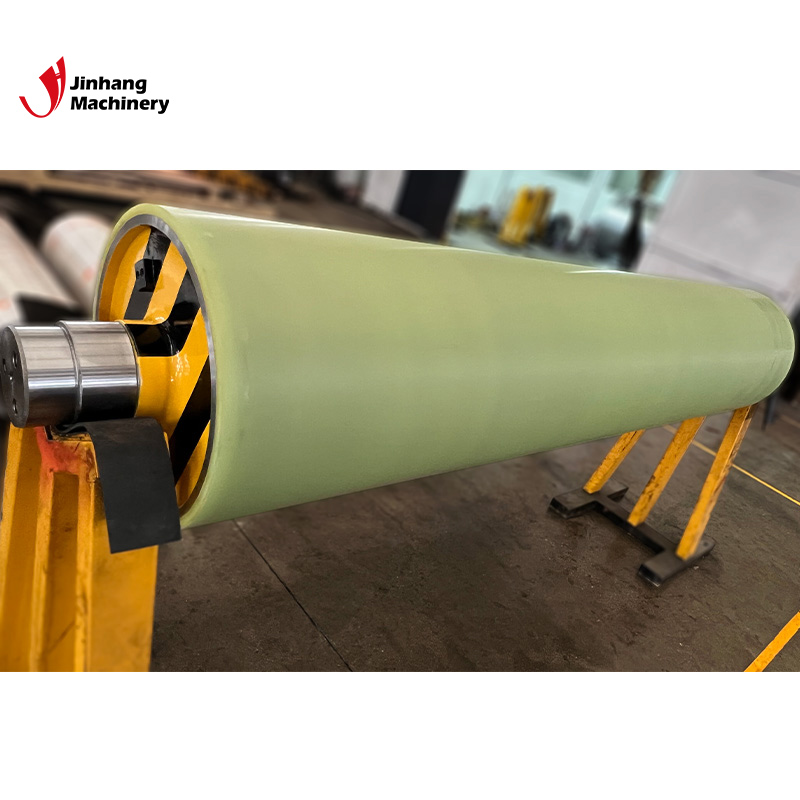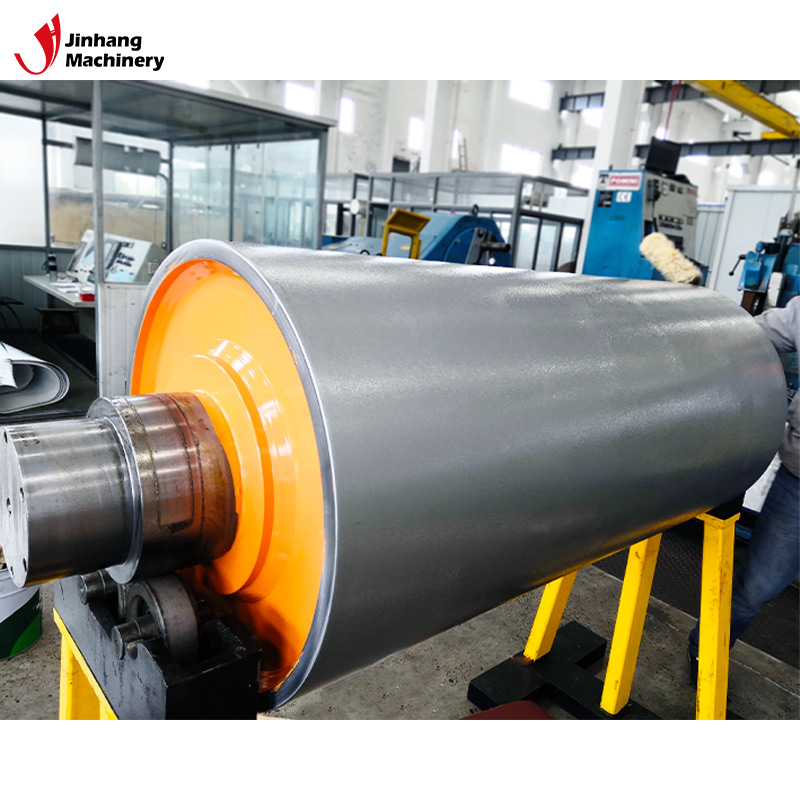What does the hardness of a rubber roller mean?
Rubber rollers play a vital role in a variety of industrial applications, from printing to packaging to textiles. The hardness of a rubber roller is one of the key factors that affect its performance and suitability.
This article will take a deep dive into what the hardness of a rubber roller is, its importance, and how to properly check the hardness of a rubber roller.

What does the hardness of a rubber roller mean?
Hardness refers to the ability of a material to resist being pressed, scored, or cut by the outside world. For rubber rollers, hardness is usually used to describe the ability of its surface to resist deformation under pressure. Hardness is usually measured using a specific durometer tool and expressed in hardness units, such as Shore Hardness. In the rubber industry, the most common hardness scales are Shore A for softer rubber materials and Shore D for harder rubber or plastic materials.
What are the factors that affect the hardness of a rubber roller?
First, the hardness of a rubber roller is mainly determined by its constituent materials. Different rubber compounds will exhibit different hardness characteristics. For example, the hardness of natural rubber and synthetic rubber is different. Secondly, the hardness of rubber changes with temperature. At higher temperatures, rubber becomes softer, while at lower temperatures it becomes harder.
In addition, rubber rollers experience aging and wear during use, which also affect their hardness. Over time, rubber rollers may become harder or softer, depending on the environment and conditions in which they are used. Finally, the external stresses to which rubber rollers are subjected during use, such as compression, stretching, or twisting, also affect their hardness.
What is the importance of rubber roller hardness?
Hardness is a key parameter for measuring the performance of rubber rollers because it directly affects the application and effect of rubber rollers. Rubber rollers of different hardness are suitable for different processes and applications:
● High hardness: Suitable for applications that require high pressure or high load, such as heavy printing or metal sheet processing. Rubber rollers with high hardness can better resist deformation and wear, extending their service life.
● Low hardness: Suitable for applications that require a softer contact surface, such as the handling of sensitive materials or light printing. Rubber rollers with low hardness can provide better adaptability and reduce damage to the processed materials. The choice of hardness must be determined according to the specific application requirements to ensure the best performance of the rubber roller.

How to check the hardness of a rubber roller?
Importance of hardness measurement
Measuring the hardness of a rubber roller is an essential part of quality control. By regularly checking the hardness of a rubber roller, you can ensure that it performs consistently in your application and prevent production problems due to inappropriate hardness.
Hardness measurement tools
The most common tool for measuring the hardness of a rubber roller is the Shore Durometer. This instrument determines the hardness value by pressing into the rubber surface and measuring the depth of the material. Depending on the hardness range of the rubber, different types of Shore Durometers are used:
● Shore A Durometer: used to measure softer rubber materials and is suitable for most industrial rubber rollers.
● Shore D Durometer: used to measure harder rubber or plastic materials and is suitable for high hardness rubber rollers.
Steps for hardness measurement
1. Preparation: Before performing a hardness measurement, make sure that the surface of the rubber roller is clean, flat and free of any contaminants. The rubber roller should be measured at room temperature to avoid hardness changes caused by temperature.
2. Choose the right durometer: Choose the right Shore A durometer (Shore A or Shore D) according to the expected hardness range of the rubber roller.
3. Take the measurement:
● Place the pressure needle of the Shore A durometer vertically on the surface of the rubber roller.
● Press the durometer gently so that the pressure needle is in full contact with the rubber surface.
● Read the value on the durometer, which is the hardness value of the rubber roller.
4. Multi-point measurement: In order to obtain more accurate results, it is recommended to take multiple measurements at different positions of the rubber roller and calculate the average value. This can avoid measurement errors caused by uneven local hardness.
Precautions during measurement
1. Measurement environment: Ensure that the temperature and humidity of the measurement environment are stable. Extreme environmental conditions may affect the hardness measurement results of the rubber.
2. Surface condition: The surface of the rubber roller should be flat and clean. If there is any contaminant or damage on the surface, it should be cleaned or repaired before measurement.
3. Measurement force: When using a durometer, the pressing force should be uniform and moderate to avoid hardness value deviation caused by excessive pressure.
4. Equipment calibration: Calibrate the hardness tester regularly to ensure its measurement accuracy. If the calibration of the hardness tester is inaccurate, the measurement results may be biased.

Adjustment and maintenance of rubber roller hardness
Adjusting the hardness of rubber rollers
In the actual production process, it is sometimes necessary to adjust the hardness of rubber rollers to adapt to different process requirements. Common adjustment methods include:
1. Material replacement: Replace the material of the rubber roller, such as from natural rubber to synthetic rubber, to obtain the required hardness range.
2. Formula adjustment: By adjusting the proportion of fillers, plasticizers or cross-linking agents in the rubber formula, the hardness characteristics of the rubber can be changed.
3. Roller design: By changing the structural design of the rubber roller, such as increasing or decreasing the thickness of the rubber layer, its hardness can also be affected.
Maintenance of rubber roller hardness
In order to ensure the long-term performance and service life of the rubber roller, it is necessary to regularly maintain the hardness of the rubber roller. Common maintenance measures include:
1. Regular inspection: Regularly measure the hardness of the rubber roller and compare it with the original design hardness to determine whether it has changed.
2. Surface treatment: If the surface hardness of the rubber roller is found to be abnormal, its hardness can be restored by grinding, polishing or re-coating the rubber layer.
3. Environmental control: Control the storage and use environment of the rubber roller to avoid the influence of high temperature, ultraviolet rays, chemicals, etc. on the hardness of the rubber.
Conclusion
The hardness of the rubber roller is an important factor that determines its performance in industrial applications. By understanding the significance of the hardness of the rubber roller and its measurement method, enterprises can better control the production process and ensure the stability of product quality. Regularly checking and maintaining the hardness of the rubber roller can not only extend the service life of the equipment, but also avoid production problems caused by improper hardness. Choosing the right hardness measuring tool and following the correct measurement steps are the key to ensure the accuracy of the rubber roller hardness measurement.
